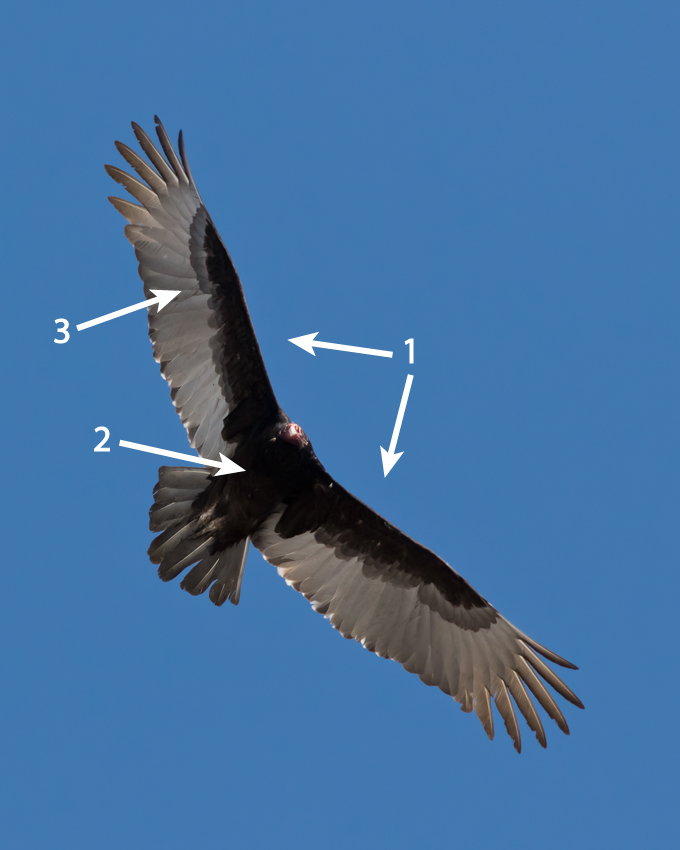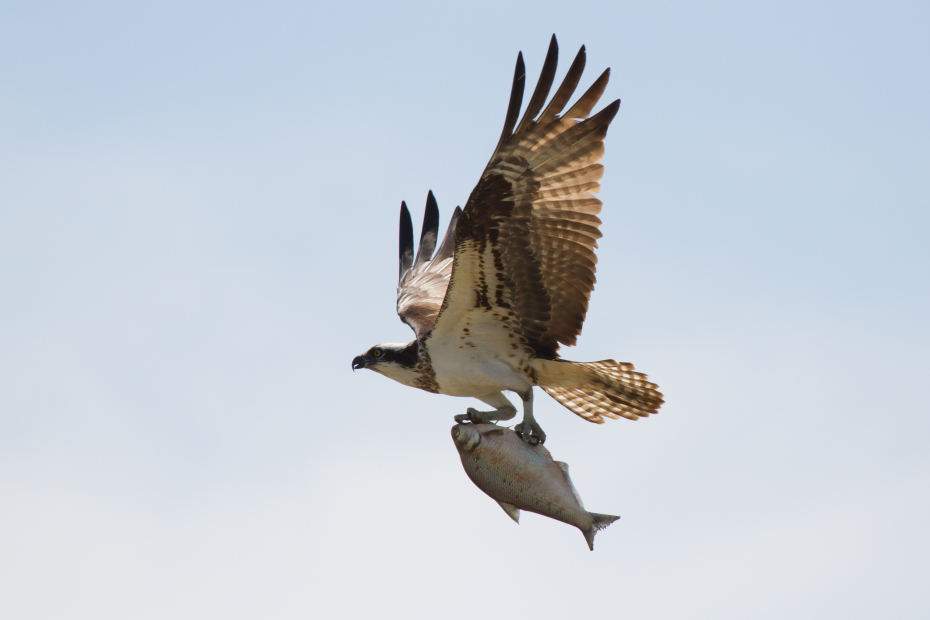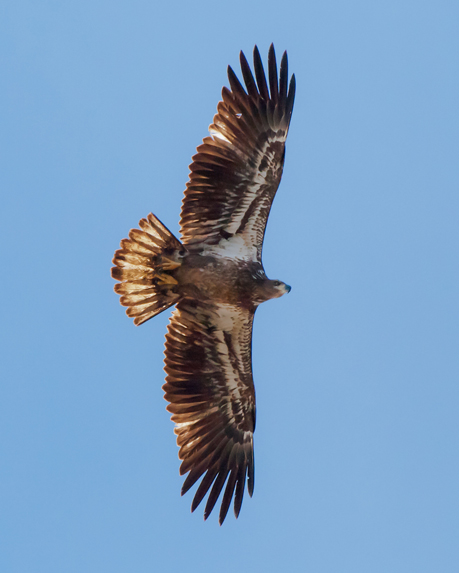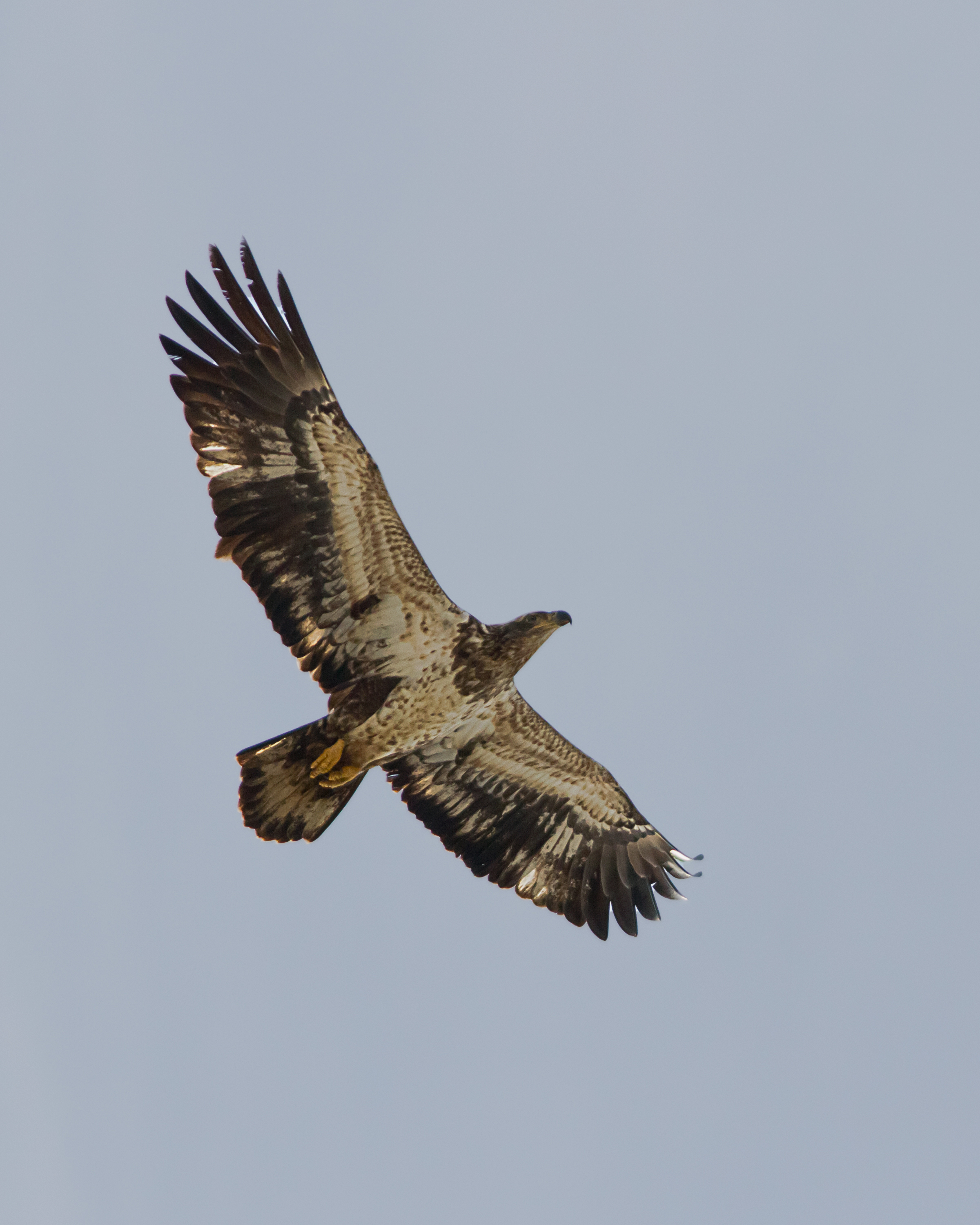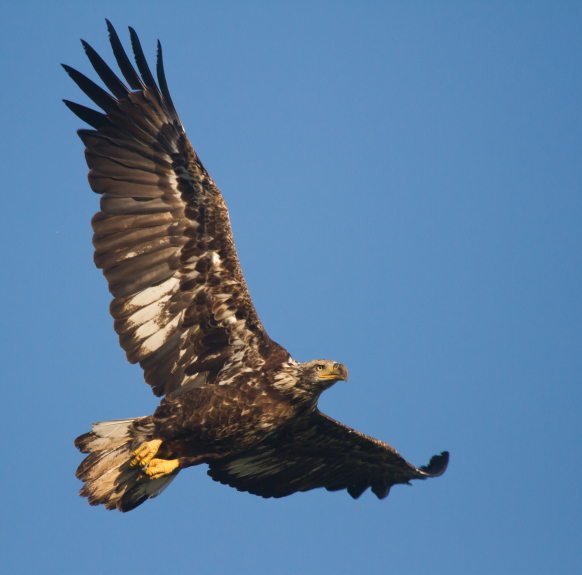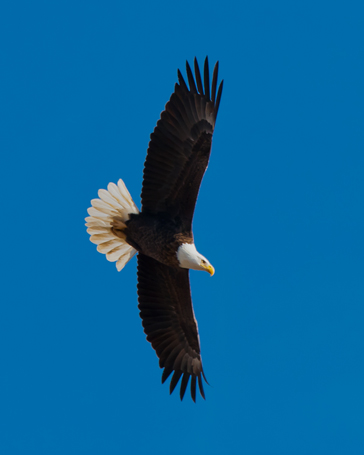BALD EAGLES VS. VULTURES
Bald Eagles are most frequently confused with the other two large raptors commonly found throughout most of Maryland, Turkey Vulture and Black Vulture (depicted below). These huge predominantly black birds, often referred to as “buzzards”, spend much time soaring on rising thermals while scanning the ground for dead animals or food scraps, and can easily be mistaken for an Eagle. The fact that Eagles, especially immature birds, often accompany groups of Vultures in search of food complicates matters even further!
Take a look at the distinguishing characteristics of both of our native vultures to familiarize yourself with differentiating vultures from Eagles.
Turkey Vulture by Frode Jacobsen.
Black Vulture by Frode Jabobsen
Black Vulture Characteristics:
Slight dihedral wing shape
Solid black body and inner wings
Contrasting silver underside of outer wing tips.
- Head is larger in comparison to body
- Tail is short and round, can blend into wings if seen from afar
- Black Vultures have a rapid burst of strenuous-looking wingbeats interrupted by short glides
Turkey Vulture Characteristics:
Dihedral wing shape (forming a V-shape angle)
Solid black body
Contrasting silver underside of wings.
- Head is small compared to wingspan and tail
- Flies in a series of slow flaps, usually 3 flaps then glide
- Will often teeter back and forth when soaring
- Appear very buoyant and erratic in flight
Bald Eagles, photo by Frode Jacobsen.
Two immature bald eagles, one on the left retains mostly juvenile plumage with some molting, the one of the right has a more advanced molt, with some immature plumage left over (note the white feathers) with the adult white head and feathers.
Even at a distance, Bald Eagles can be distinguished from vultures based on shape, flight patterns, and plumage:
1. Bald Eagles soar with their wings held flat/horizontally, unlike Turkey Vultures and Black Vulture (to a lesser degree) that soar with their wings raised in a V-shape (dihedral). Bald Eagles have a more direct and powerful flight than Vultures. Wing beats will be slower, more consistent than vultures, which tend to flap in short burst then glide.
2. & 3. Juvenile and immature Eagles always have (albeit to varying degree) whitish markings on the belly and underwing (see image above). Vultures always have solid black bodies and mostly black wings and tails, except for silvery panels on the underside of their wings (see images above).
4. & 5. In the adult Bald Eagle plumage, the white head and tail is visible from a great distance.
Bald Eagle vs. Hawks
Osprey with a fish by Frode Jacobsen
The next most common source of confusion is the Osprey, which like the Bald Eagle is also closely tied to estuaries and lakes and therefore often found nesting side by side with Bald Eagles. Ospreys are exclusively fish-eaters and often fall victims on kleptoparasitism by Bald Eagles, an action-filled drama that plays out by one or more Eagles falling in hot pursuit of an Osprey after securing a fresh catch, harassing the smaller Osprey until it lets go of its prey for the Eagle(s) to relent and instead dive for the stolen food.
Although superficially similar, Ospreys are in most instances readily distinguished from Bald Eagles by their bright white underside (except tail and flight feathers) and all-dark upperside. They also have a distinct black eye mask on an otherwise white head, which helps reduce sunglare while hunting over open water. The Osprey also typically soars and glides on slightly drooping, angled wings. They also frequently hover while fishing, allowing them to remain stationary with their eyes fixed on a particular prey item, upon which they will pounce through a steep dive with their feet and talons extended to grab the intended target.
Other common hawks that can be mistaken for an Eagle are Red-tailed Hawk and Red-shouldered Hawk, medium-sized woodland hawks that can appear larger than their actual size when seen soaring over the forest canopy or farm fields.
Adult Red-Tailed Hawk by Frode Jacobsen
Adult Red-Shouldered Hawk by Frode Jacobsen
Aging Bald Eagles
It takes several years for juvenile Bald Eagles to attain their diagnostic adult plumage. This transition occurs in stages through replacement of juvenile and immature feathers during annual molt(s). Some groups of birds, like waterfowl, shed all their flight feathers at once and become completely flightless for a period of time following their breeding season. This molt strategy works well for birds feeding under water, but not so well for birds that depend on flight to feed or to escape predators. Birds of prey, such as Eagles, are especially reliant on maintaining their agility and speed to catch prey year-round and therefore shed 1-3 flight feathers at a time, in a very predictable manner as they age. Experts can therefore easily determine the exact age of an Eagle and other raptor just by examining which feather tracts are fresh, which are currently under molt, and which feathers are worn (retained from early age), until they reach adulthood upon which the ingrowing feathers look identical to the ones they replaced. In Bald Eagles, there are four age classes that can readily be distinguished based on plumage features by the trained eye:


